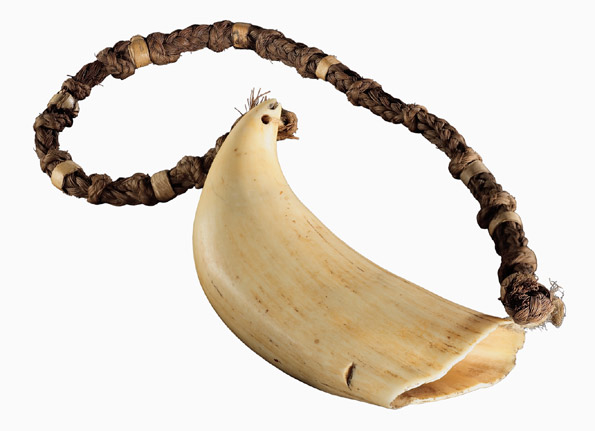Due to scheduled maintenance on Friday 19th April 2024 between 7:00PM and 9:00PM AEST, the Scootle website may face disruption in service. We apologise for any inconvenience caused.
 Tabua (ceremonial whale tooth), c1800s
Tabua (ceremonial whale tooth), c1800s
TLF ID R6105
This tabua, a kapkap (a forehead or shoulder ornament), is a large, cream-coloured whale tooth, originating from Fiji in the 19th century. It is perforated at the tip and the base for suspension. Its suspension cord is a tight, complex plait of sennit (coconut fibre) with ornamental knots at 2-3 cm intervals. Nine ornamental bands of pandanus leaf, about 1.0 cm wide, are dotted around the cord. The tooth measures 16.8 cm (h) x .70 cm (w) x 5.5 cm (d), and including the cord it measures 32.0 cm x 16.0 cm.
